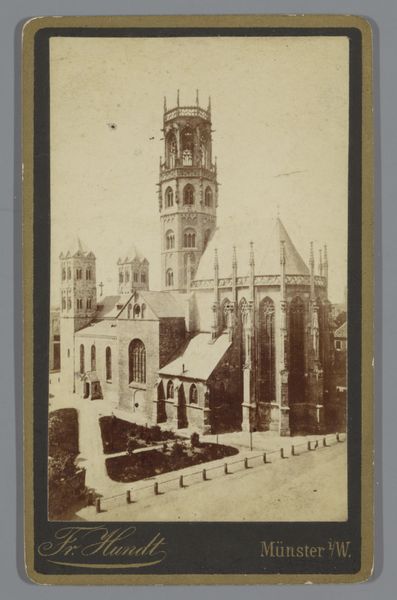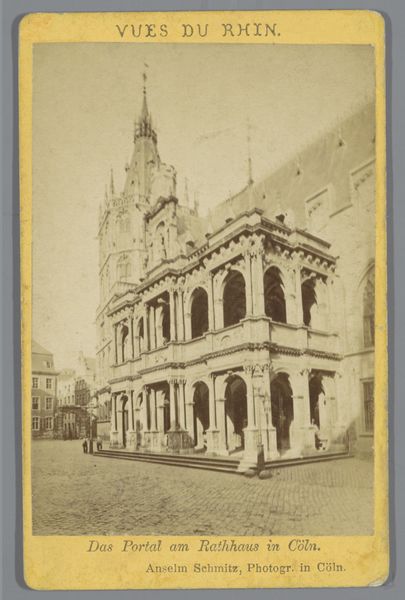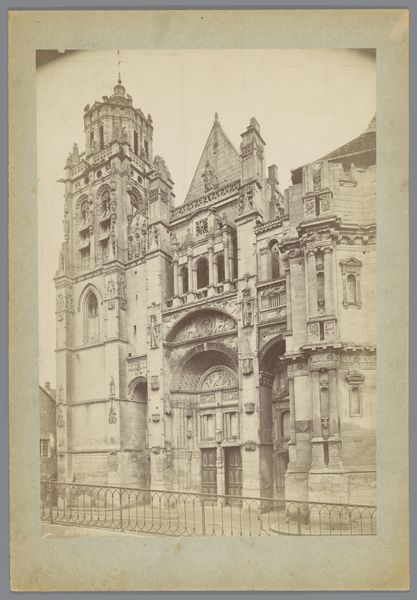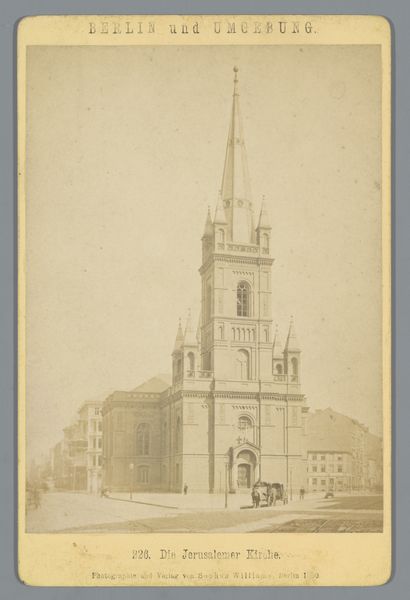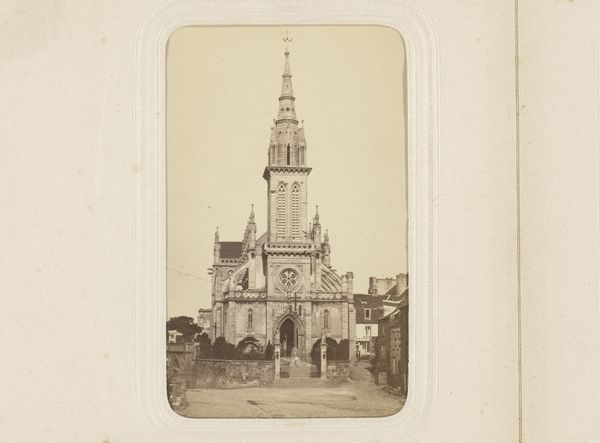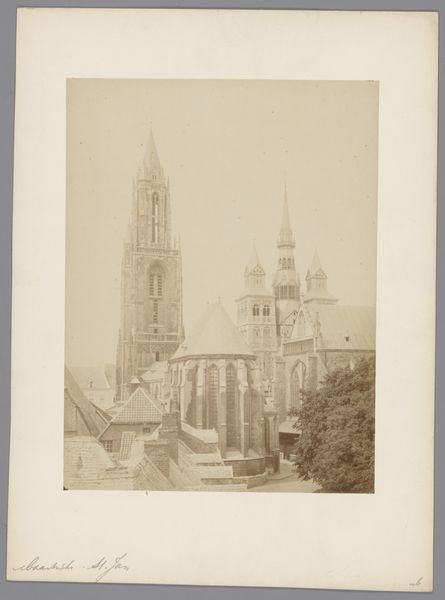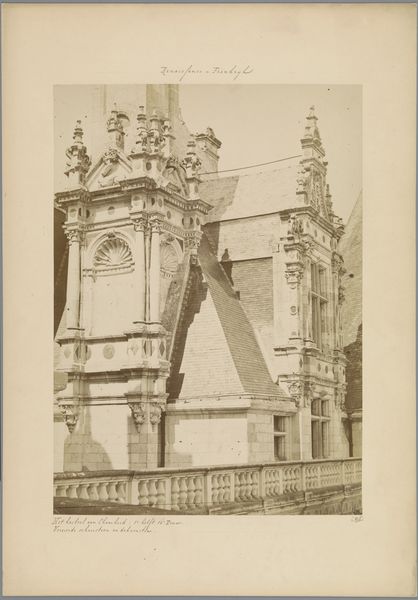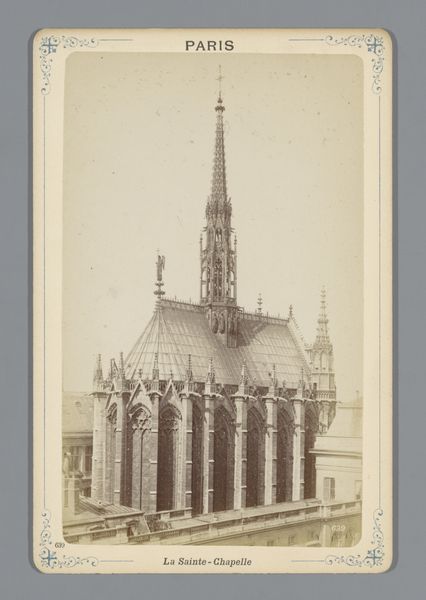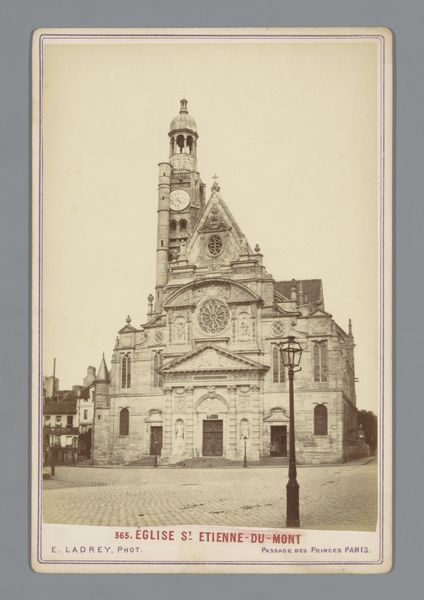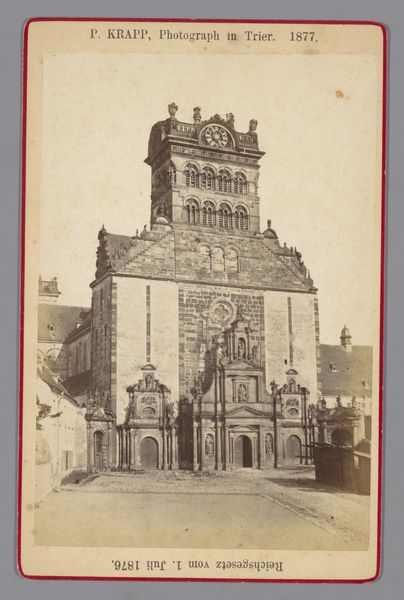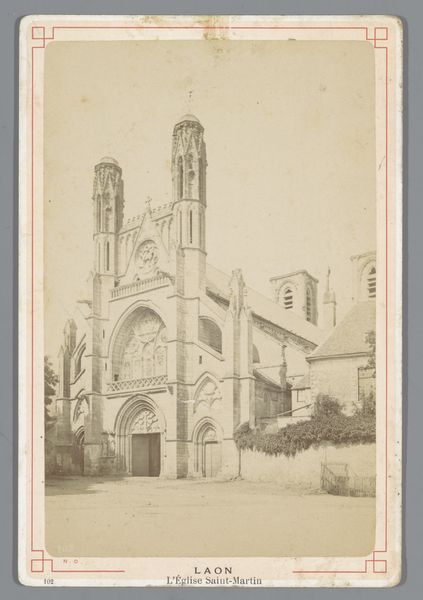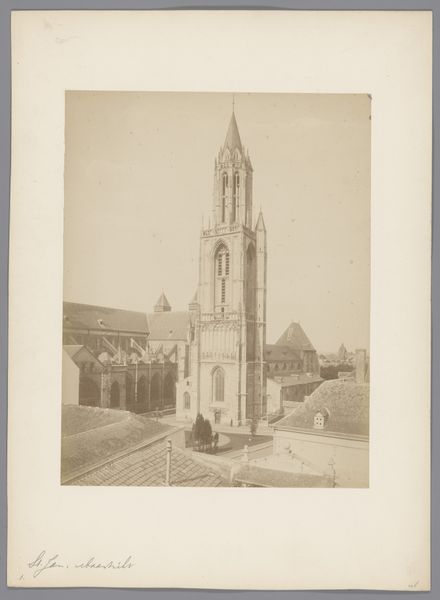
Fotoreproductie van een ontwerp van de Nouvelle Église Sainte-Anne-D'Auray naar E. de Perthes 1867 - 1880
0:00
0:00
print, etching, photography, architecture
# print
#
etching
#
photography
#
cityscape
#
architecture
Dimensions: height 111 mm, width 63 mm
Copyright: Rijks Museum: Open Domain
Curator: This photographic reproduction, created by Hippolyte-Auguste Collard between 1867 and 1880, presents a design by E. de Perthes for the Nouvelle Église Sainte-Anne-D'Auray. The use of etching gives it a striking linear quality. Editor: It has such an ethereal, dreamlike quality. The sepia tones soften the stone, almost ghosting the whole structure into existence. Curator: Exactly. Notice how Collard, likely working from an architectural drawing, employs both photographic and etching techniques. This fusion gives the image a distinct graphic clarity, emphasizing the architect's design and the play of light and shadow across its facades. Editor: Churches, cathedrals... they are such powerful symbols of community. I imagine that a 'new church', as the name suggests, would offer an invigorating new religious vision or serve as a response to a specific social climate during its conception and construction. Does Sainte-Anne carry local significance? Curator: Absolutely, Sainte-Anne-D'Auray is a significant pilgrimage site in Brittany. Saint Anne is the patron saint of Brittany. This design for the "new" church is charged with that devotional history, subtly but irrevocably linked to the community that calls this region home. Editor: Look at the figures in the foreground. They’re so small in comparison to the church that they emphasize how large and stately the church really is. But in all fairness, the church is small in comparison to its purpose; it should stand, imposing and unconquerable, over time. Curator: An excellent point. The scale, amplified by the photograph's perspective, not only demonstrates architectural grandeur but also hints at the church’s aspirational status—a testament to faith rendered in stone and light. The verticality of the spire, piercing upwards, it reinforces the transcendentality of its ultimate aim, reaching a hallowed ideal beyond mundane existence. Editor: Examining the linear nature of its components brings forth the divine structure of the church—the church for all the believers. It is quite beautiful when thought of in such a manner. Thank you for the time and insight. Curator: My pleasure, such analysis proves how the artwork embodies and communicates the architecture's intended presence.
Comments
No comments
Be the first to comment and join the conversation on the ultimate creative platform.
